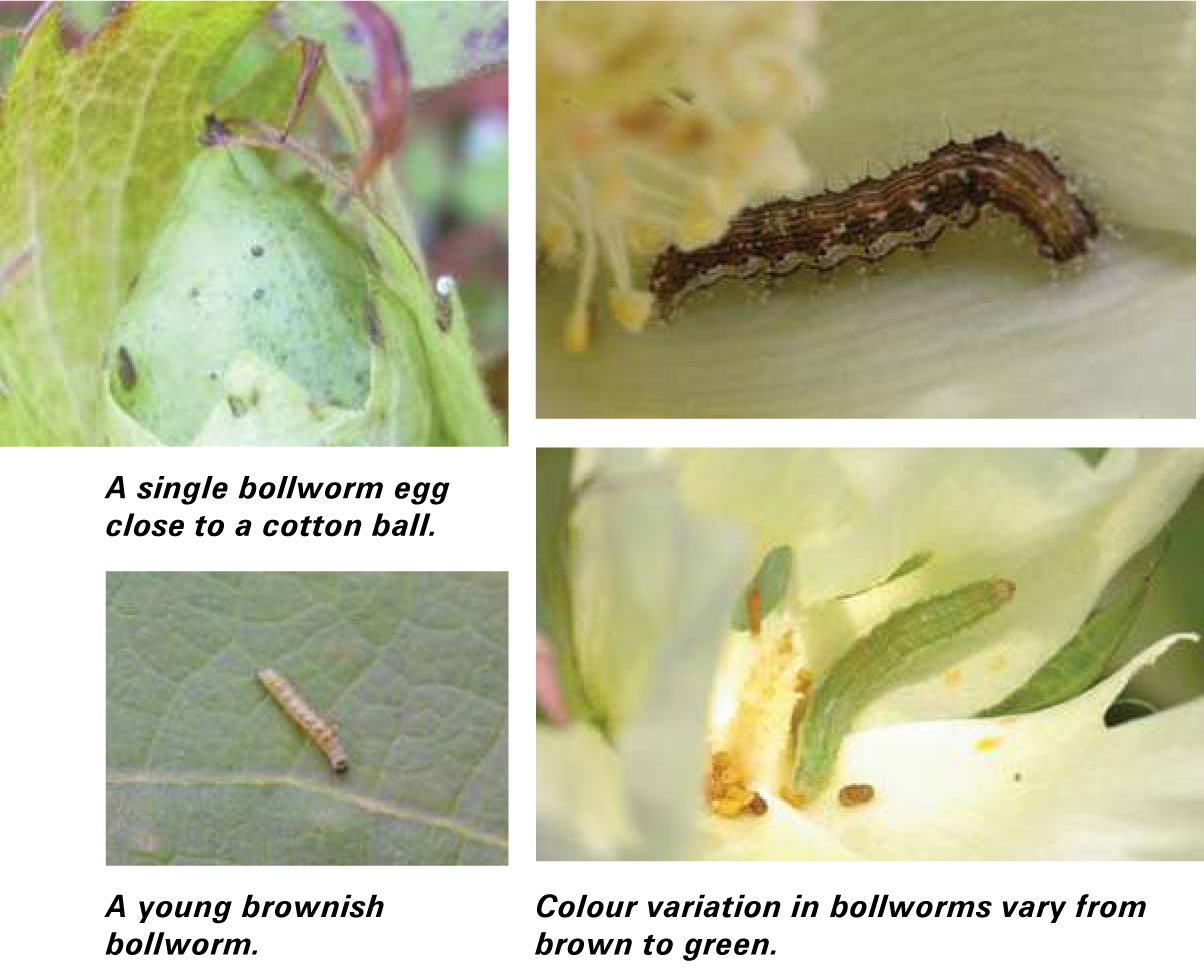September 2022
African or cotton bollworm feeds on almost all cultivated crops and is regarded as one of the major pests of cotton in South Africa. It is imperative that farmers can identify these pests to manage them early with the right set of tools.
The lifecycle of cotton bollworm (Helicoverpa amigera) ranges between 25 to 35 days and is temperature dependent. Moths are most active at dusk and dawn, with male moths having a characteristic light pale green colour and female moths being brown. Female moths lay large batches of eggs (1 000 to 3 000), which start to hatch after two to three days. The eggs are initially cream or white with longitudinal ribs but darken just before hatching.
Larvae vary in colour from pinkish to green or yellow, but the most common colour is brown. Young larvae have black spots and can look similar to young fall armyworm larvae, with dark heads. Older larvae have yellow or brown heads, with clear spiracles and alternating dark and pale longitudinal bands along the body. There are normally six larval instars as feeding continues for two to three weeks before larvae pupate in the soil.
The pupae have a smooth shiny brown appearance, with two spines on the rear end, and are seldom seen. Pupation takes ten to 20 days, following with the first moths starting to emerge, beginning their search for a mating partner and repeating the cycle again.
Young larvae feed prolifically on the growing tips and terminal buds. From the second instar onwards, squares, flowers and balls are attacked and often hollowed out. When bollworms attack the cotton blooms, they may open prematurely and stay fruitless. Damaged bolls fall off, fail to produce lint or produce lint of inferior quality. Damage symptoms characterised by circular holes bored into fruit serve as entry points for secondary infections by fungi and bacteria and may lead to the rotting of fruits.
Planting cotton cultivars modified with insect resistant technology (Bt cotton) offers excellent control, but it is crucial that the area also includes the planting of a mandated refuge. Weeding, inter-row cultivation, removing crop residues, deep ploughing before planting and the use of registered insecticides for bollworm are additional control options.
Regular scouting of cotton fields and monitoring the flights of moth populations with pheromone traps are essential for early detection, so that bollworm infestations can be reduced before its causes serious crop damage.
For more information, visit https://croplife.co.za/KnowYourPest_CottonBollworm.

Publication: September 2022
Section: Pula/Imvula
Author: CROPLIFE SOUTH AFRICA